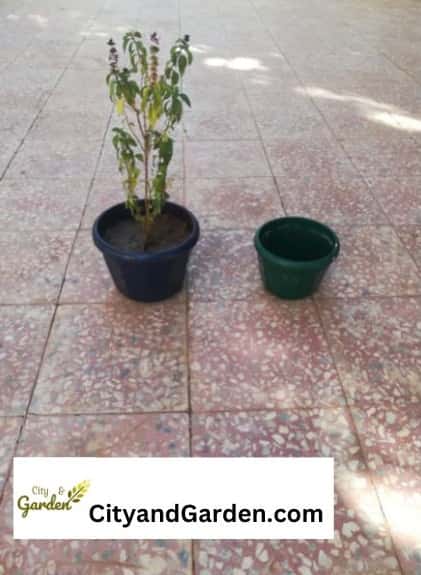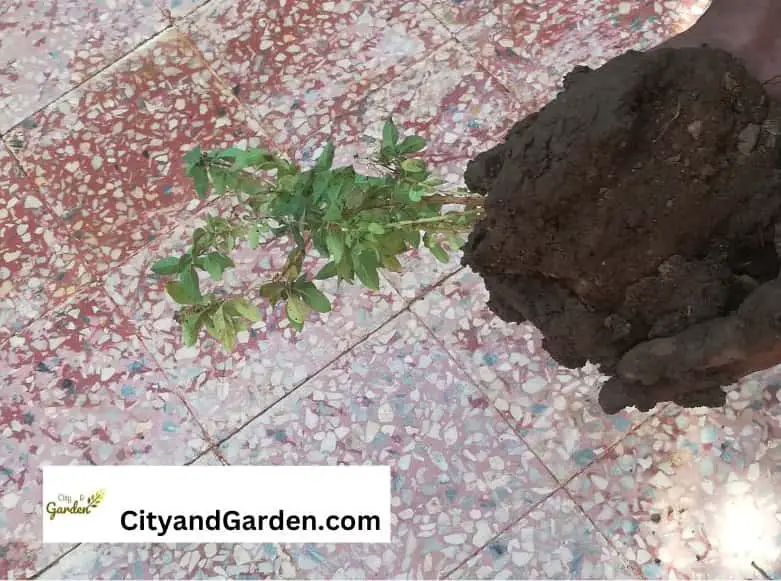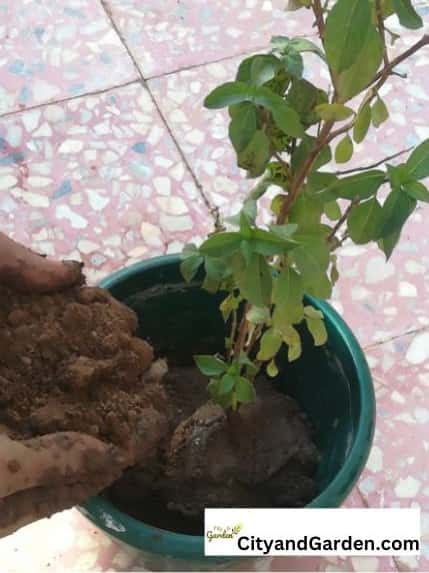The normal thing is that people repot their plants in a bigger pot. But sometimes you may need to repot into a smaller pot. I have your back in this case. Because in this article I will tell you why you may need to repot your plant in a smaller pot. And when, and how to do it in order for your plant to not lean after repotting.
But before diving deep into the details I will put the answer to our main question as simple as this: can I put my plant in a smaller pot? Plants can be potted in a smaller pot if the current pot is too big for the plant. Otherwise, roots and foliage pruning are required in order for the smaller pot to fit the plant’s size.
Keep reading to know in which case you should repot your plant into a smaller pot.
Why you may need to repot your plant into a smaller pot
Choosing the right pot size is important. Because if you plant your plant in a relatively big pot the soil will be too much. Such soil will retain much moisture ( more than what the plant needs).
Such a thing will make the soil waterlogged for an extended period of time, which will cause root rot. Root rot is the number one reason behind houseplants’ death and suffering.
Also, If the plant has a big room for the roots to grow, it will spend extra energy and resources on colonizing such soil. Those same energies can be focused on foliage growth and blooms. So if your plant is potted in a relatively big pot it is better to repot it into a smaller pot.
But how to tell whether your current pot is too big for your plant? Simply if the root ball is tiny and there is too much soil surrounding the soil it means the pot is too big for your plant. Your plant’s root ball should be surrounded by a few inches of soil.
On the other hand, If the current pot is a good fit for your plant and still you want to repot it into a smaller pot, You need to do extra work. You need to downsize the root ball and the foliage. Which I will discuss later.

The right repotting time
The best time for repotting your plant regardless it is a smaller pot or a bigger pot is during spring. Because in spring the plant is hungry for growth and it just went out of its winter dormancy period.
Also in spring, the light is brighter, and the weather is warmer which will allow excess water to evaporate. Such a thing decreases the root rot odds which is a possible repotting problem.
The second best time for repotting your plant is summer. Just avoid repotting on very hot and dry days. Because on such days the plant is already stressed.
So you don’t want to further stress your plant by repotting it. Repotting is a big change for any plant. And change is what stresses plants.
Avoid repotting your plant during autumn and winter. Because in autumn the plant is going towards dormancy. So it is not interested in growth.
While in winter the plant will enter a full dormancy period. When the plant is dormant it focuses its energy on resting rather than active growth. Repotting requires the plant to put some effort into growing new roots in the new pot.
How to repot a plant into a smaller pot
Follow the below tips and you will have successful repotting
Choose the right Pot
As I mentioned earlier overwatering or root rot is the number one reason why plants die. The type of pot you use contributes to successful watering practice.
Tack into your account that an unglazed clay pot will allow the soil to dry faster. While glazed or plastic pots will dry slower. Because unglazed clay is a porous material that allows the water to evaporate.
Also, it is important to choose a pot with drainage holes in order for excess water to drain out.
Unpotting the plant
Using your fingers hold the plant stem then flip the pot upside down in order to pull the plant from its old pot. If it is a plastic pot you can squeeze the pot in order to loosen up the soil so it will be pulled easily.

In case it is clay or other hard material, by using a sterilized knife cut through the soil edges (soil that is attached to the pot).
Choosing the right potting mix
The soil that accommodates the container’s plant differs from the garden’s soil. Plants do not grow in pots in nature. So the potting mix should be made especially to make growing plants in containers works.
There are different potting mixes in the market that are made especially for different types of potted plants. There is a potting mix for orchids, such a mix is designed to fit the orchid’s needs for fast drainage and enough air circulation around the roots.
Also, there is a potting mix that is made especially for African violets and similar plants. While there is a succulents and cactus mix. The Cactus mix is designed to stimulate the soil in the cactus natural habitats (deserts).
And there is an all-purpose potting mix. This is the standard potting mix that can accommodate most of the container plants.
However, You should use a potting mix that fits your plant needs. But generally speaking, all potting mixes should be porous enough to allow air circulation and proper water drainage. And compact enough to hold the necessary nutrients and moisture.
Adjusting the root ball
After you pulled the root ball from the old pot, use your fingers to loosen up the root ball in order to grow well in its new pot. If the root ball has too much soil. Remove as much old soil as you can.

Then put some new potting mix in the smaller pot to cover the bottom. Then place your plant in the new pot. Keep some empty space in the pot surface in order to accommodate the water when you water your plant without making a mess.
Put the potting mix on the sides in order to fill the gaps. Gently press the soil in order to remove any air pockets in the soil and to fix the plant in its new pot firmly.

The above steps apply to a plant moved to a smaller pot because the current pot is too big. But if you just want to repot your plant into a smaller pot and you know the new pot is not fitting the plant’s size, cut one-third of the roots in order to fit the smaller pot.
Don’t worry your plant will make it in its new pot. Also, trim one-third of the foliage so the remaining roots are enough to feed the foliage.
What to do after repotting your plant into a smaller pot
After you repotted your plant into a smaller pot give it a good soak of water until the water drains through the drainage holes.
Most potting mixes have fertilizer on them. So you don’t need to fertilize your plant right away after repotting.
You can fertilize the repotted plant after one month. Also, keep your plant away from direct sunlight for a few weeks after the repotting. And make sure not to overwater your plant. For more detailed information about caring for potted plants and mastering Container Gardening, get my book Container Gardening: A Step-by-Step Practical Guide.
